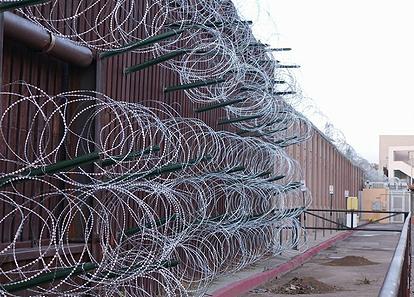
SACRAMENTO, California, March 21, 2024 (ENS) – Oil giant Chevron has agreed to pay a record-breaking $13 million in settlement agreements to two California state resource agencies for oil spills in Kern County in 2019 and ongoing.
The California Department of Conservation announced a settlement agreement totaling $5.6 million for the company’s oil spills in Kern County in 2019. This is the largest fine assessed in the Department of Conservation’s history, and all the money is earmarked for ongoing work to plug old, orphaned oil and gas wells.
The company, which has already paid for the cost of these cleanups, now will pay the settlement fines to the California’s Geologic Energy Management agency, the division of the state Department of Conservation that oversees oil and gas operations.

“This agreement is a significant demonstration of California’s commitment to transition away from fossil fuels while holding oil companies accountable when they don’t comply with the state’s regulations and environmental protections,” said Department of Conservation Director David Shabazian. “Every penny collected here will go toward plugging old, orphan wells in order to protect the environment and people of California.”
The California Department of Fish and Wildlife, CDFW, announced its settlement agreement totaling $7.5 million for Chevron’s spills in Kern County, the largest administrative fine in department history.T he company, which has already paid for the cost of these cleanups, too, will pay the settlement fines to the CDFW program responsible for overseeing the state’s spill prevention and response activities.
“California remains committed to protecting the state’s diverse and irreplaceable natural resources, so they can be enjoyed by current and future generations,” said CDFW Director Charlton Bonham. “This settlement is a testament to our firm stance that we will hold businesses strictly liable for oil spills that enter our waterways and pollute our environment.”
A joint investigation by Propublica and The Desert Sun found that at least one of Chevron’s spills is still running 21 years after it began in a Kern County oilfield, although much reduced from its peak. The amount spilled from the site, dubbed GS-5, is larger than the 11 million gallon Exxon Valdez disaster March 24, 1989 in Prince William Sound, Alaska.
Chevron earned at least $11.6 million off GS-5 in just three years, The Desert Sun and ProPublica found, by “trucking out raw, sticky crude from the gushing, burbling site, known as a ‘surface expression,’ that was refined and sold.
Wildlife in Kern County that could be at risk from the spilled oil include: coyotes, beavers, rabbits, bobcats, lizards, snakes, hawks, osprey, and in the river California golden trout.
Wednesday’s settlement announcement stopped short of saying GS-5 and other ongoing spills must be stopped, as required under state law. Instead the state said the settlement “creates a framework for managing the spills with State oversight,” and “Chevron agrees to continue monitoring the site with Department of Conservation oversight.” No specific sites were named.
The fines cover the first phase of the Cymric spill, a giant spill to the surface in the Cymric oil field near the Kern County town of McKittrick, that Governor Gavin Newsom toured in 2019, where a river of thick crude flowed down a natural watershed. Chevron for several years denied the spill posed a risk to health and the environment, and fought a $1.6 million fine imposed by state regulators.
Department of Conservation Settlement Details
In 2019, Chevron’s underground injections in Kern County caused oil to rise and pool at the surface, creating hazardous conditions for the environment and public health.
That same year, Governor Newsom signed AB 1057, providing the Department of Conservation’s CalGEM division, the state’s oil and gas regulator, with a new charter to protect public health, safety and the environment. The law gives the agency more powers to hold oil companies accountable, and a more recent state law enables the agency to make criminal referrals for oil company violations.
The Department of Conservation’s agreement with Chevron does three crucial things: it drops Chevron’s appeal of the original fines; it provides $5.6 million to the State of California to plug old, orphan wells statewide; and it creates a framework for managing the spills with state oversight.
Chevron has agreed to continue monitoring the site with Department of Conservation oversight.
Later this year, the Department of Conservation will begin identifying wells for Phase 2 of the state’s orphaned well abandonment program.
The Department of Conservation has already identified 378 wells across six counties to begin work under the state’s well abandonment program, which permanently seals orphan wells and remediates sites.
Work in Santa Barbara and Los Angeles counties began late last year. Much of the work was made possible by a historic $125 million in state and federal funding to address old, aging oil infrastructure.
California is eligible for an additional $140 million in federal funding to plug more wells and will pursue those opportunities in the coming year. The Department of Conservation is also working to claw back funding from oil companies that sold off idle, orphaned, deserted or unplugged wells.
California Department of Fish and Wildlife Settlement
CDFW’s Office of Spill Prevention and Response, OSPR, is responsible for leading prevention, removal, abatement, response, containment, and cleanup efforts for oil spills in surface waters of the state.
As the agency is the state incident commander for managing oil spill responses, staff have documented over 70 oil spills between 2018 and 2023 in Kern County that are attributable to Chevron.
OSPR’s investigation found that these spills accounted for more than 1.48 million gallons (35,333 bbls) of produced water and more than 446,600 gallons (10,633 bbls) of oil spilled. These spills killed or injured at least 63 animals and impacted at least six acres of salt brush and grassland habitat, including over 22,000 linear feet of streambed.
The $7.5 million settlement reached between Chevron and the state Department of Fish and Wildlife will go toward environmental enhancement projects, oil wildlife response preparedness, and future spill response funding.
The California Department of Fish and Wildlife’s settlement with Chevron does three things:
- – Places $6.8 million in the department’s Environmental Enhancement Fund, for project grants to acquire habitat for preservation or improve habitat quality and ecosystem function.
- – Pays $500,000 to the Oiled Wildlife Care Network at the University of California, Davis School of Veterinary Medicine for oiled wildlife response work and to maintain oiled wildlife care facilities in Kern County.
- – Places $200,000 in the department’s Fish and Wildlife Pollution Account, to be available for responses to future spills.
The two California state agencies say they will continue their work together to ensure oil companies do a better job upgrading their infrastructure and monitoring the consequences of subsurface steam injection to prevent oil spills.
Featured image: California regulators have fined Chevron for dozens of oil spills in Kern County, including this 800,000 gallon crude oil and water spill into a Kern County canyon from the Cymric oil field in 2019. (Photo courtesy State of California)



